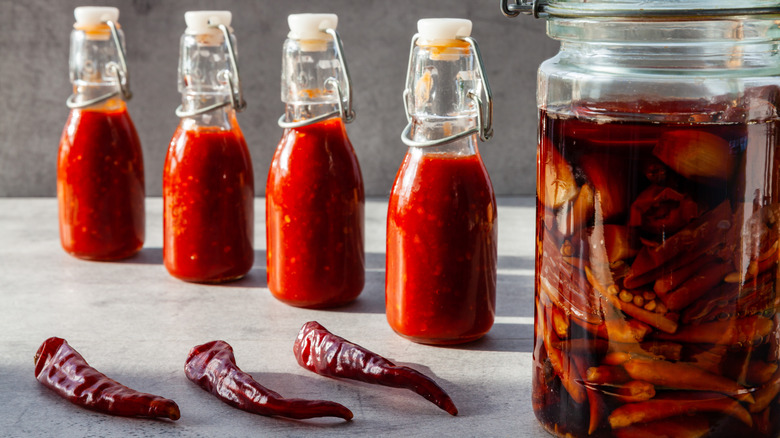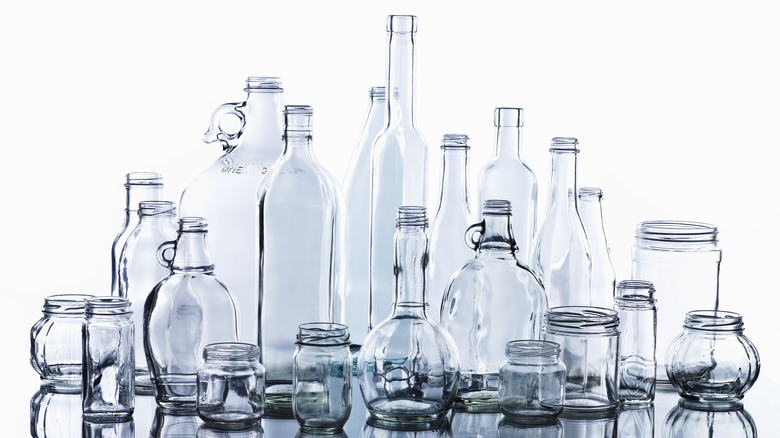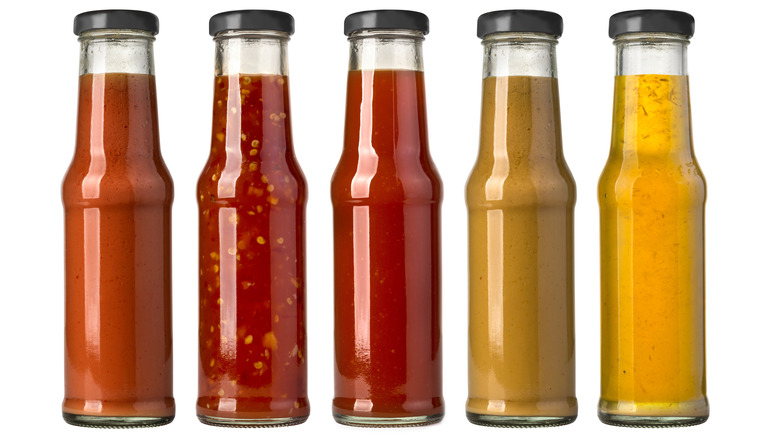What You Should Know Before Bottling Fermented Hot Sauce
Whether it's Cholula or Tabasco, everyone has a hot sauce they swear by. Some hot sauce lovers turn up the heat and decide to embark on making their own variations. Fermented hot sauce is a particularly popular niche of home hot sauce making and it can yield rich, spicy sauces that make you sweat. But in order to achieve a properly fermented hot sauce, it's important to use the right storage bottles – ones that help the process along instead of hinder it.
Taller, narrow bottles do the trick perfectly when it comes to homemade fermented hot sauce. Where a wider-mouthed jar offers too much contact with air, narrower options allow the fermentation process to maintain momentum. In order for lactic acid fermentation (the process responsible for the final sauce) to occur, the chilis need to be denied oxygen. Taller, airtight jars and bottles minimize air contact while maximizing fermentation. And that means a sauce that's worth the time it took to make it.
The right bottle means optimal flavor
As long as the containers are sufficiently narrow, there are many options for the material. Tall glass jars and bottles with airtight lids are always a great choice because they are easy to clean and do a good job of keeping oxygen out. They also allow for visual inspection of the sauce, which can be helpful in monitoring the fermentation process. Ceramic containers offer another option, as long as they can be closed adequately. Even food-grade plastic containers can be utilized.
Choosing the right container ensures that whatever peppers you're fermenting are getting proper attention from the lactic acid bacteria and that results in a sauce with nuanced, layered flavor. The goal of fermentation is to bring out flavors that would otherwise be missed in making a simple vinegar-based sauce. Chef Dan Kluger explained the beauty of homemade hot sauce in an interview with Bon Appétit, saying, "What makes fermentation so compelling is that it gives hot sauce this complex, well-rounded flavor." That flavor and the quest to find it is what makes making your own sauce worthwhile — and satisfying.
A narrow bottle makes fermentation easier
Fermenting hot sauce obviously requires the production of lactic acid bacteria. There are generally a couple of methods to achieve that where bottle shape plays a role. If you're starting your hot sauce by making a mash (dicing your chiles and combining them with salt and a bit of water into a uniform mixture), one thing to keep in mind is that the mash may rise to the top of the water, forming a floating raft. That's not good for proper bacteria production and can lead to yeast growth. Narrower jars have less room for this to occur, especially if the mash is properly packed in.
One popular choice is using glass mason jars with sealing lids — they come in many narrow sizes and are incredibly sturdy. They're clear, so you can keep an eye on the sauce, and they're reusable, meaning you can repurpose them long after pepper season has come and gone. Whether you go with glass, ceramic, or plastic, it's important to know what you're going to use before you begin fermenting those peppers. It's the best way to guarantee a hot sauce that has you wanting to make more.


